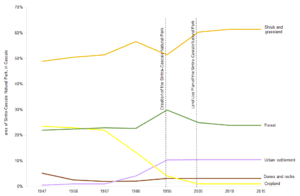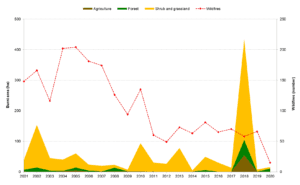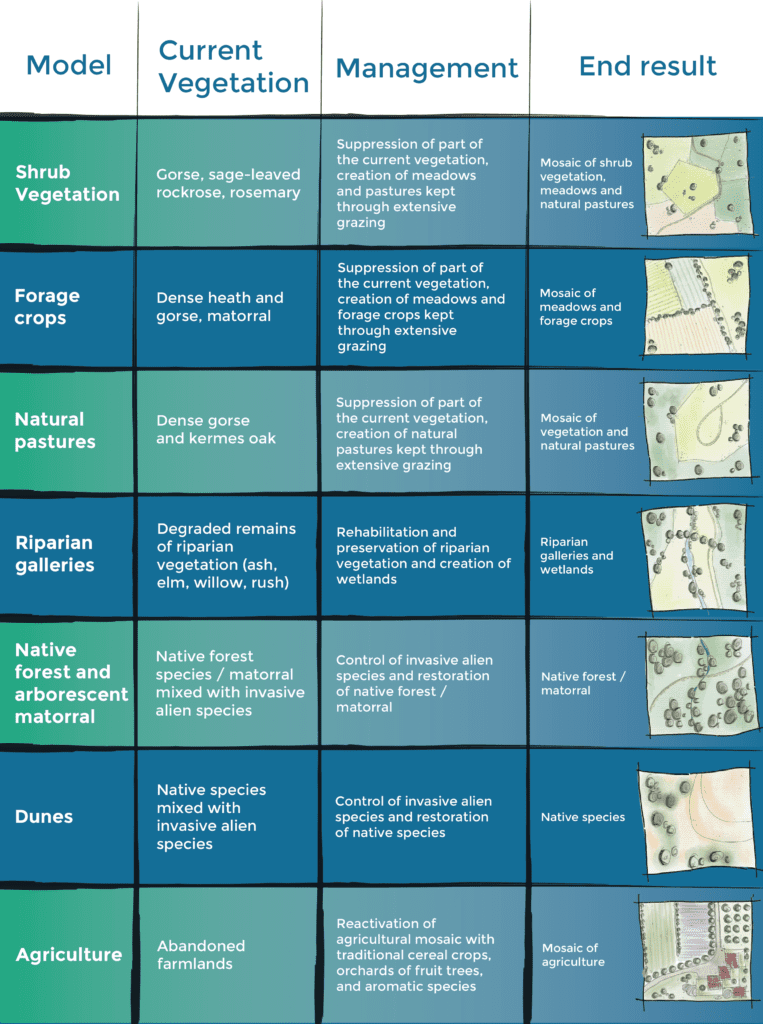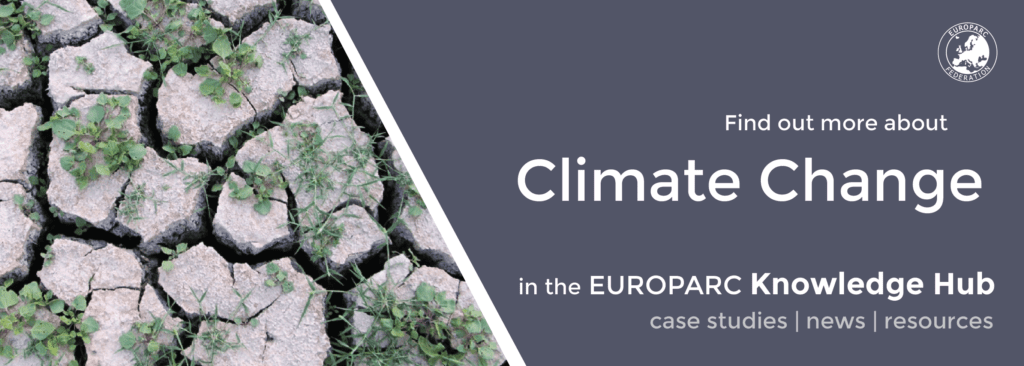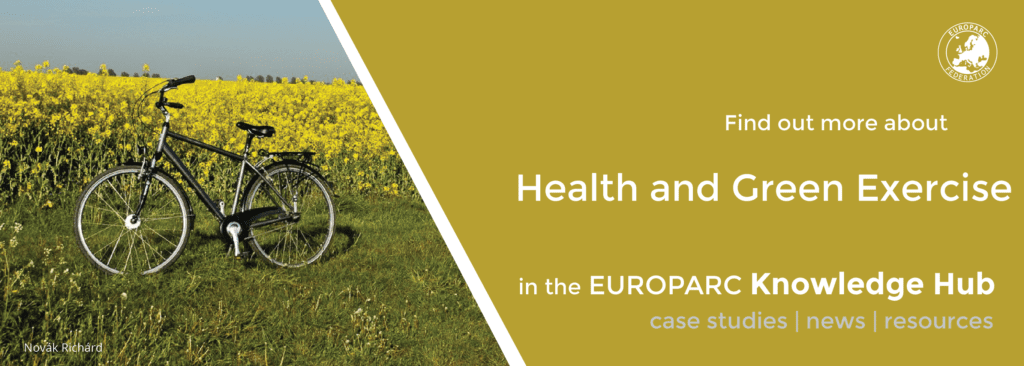Managing the landscape to control wildfires
Wildfires are not new occurrences, however climate change will cause them to be more and more frequent, even in areas previously not at high risk. So, how can we manage the landscape to limit the negative impacts of these fires? This expert article, written by EUROPARC Council Member João Cardoso de Melo, Marlene Marques and Débora Hemriques, details the experience of Sintra-Cascais Natural Park in Portugal.
Climate Change & Wildfires in Europe
Over the last decade there have been recurrent wildfires in Europe, with the 2021 wildfire season being the second-worst on record, according to the Advance EFFIS Report on Forest Fires in Europe, Middle East and North Africa (2021). The IPCC climate change projections (2022) predict an increase in temperature and more extended dry periods, expecting an increase in the frequency of droughts, heatwaves and other extreme weather events. Wildfires have been particularly harmful in Southern Europe (France, Greece, Italy, Portugal and Spain). Portugal has one of the highest forest fire risk rankings in Europe.
On October 6th, 2018, a wildfire burned 429.0 ha of the Sintra-Cascais Natural Park (SCNP) (about 3.0% of its total area) and had significant environmental, societal and landscape impacts, endangering people, and villages, affecting forestland and other natural areas. This event was a severe warning that wildfires, which occur annually in rural areas, can also happen in peri-urban areas, and threaten densely populated urban villages. Given this scenario, the combination of unmanaged areas and climate change pressures can promote even more severe, frequent, and large-scale wildfires in the future.
About Sintra-Cascais Natural Park
The SCNP, with a total area of 14,446.31 ha, is located within the municipalities of Sintra (11,174.75 ha) and Cascais (3,271.56 ha), two of the most densely populated counties in Portugal. It is classified as a
protected area by the Portuguese governmental Institute for Nature Conservation and Forests and a part of the Natura 2000 network for conservation of habitats and species under the Habitats Directive. It also includes the area classified by UNESCO as Sintra World Heritage Cultural Landscape, both by its cultural interest and natural beauty. The SCNP, characterized by diversified natural and semi-natural landscapes and a high environmental, historic, cultural and social heritage, is very popular for outdoor nature activities such as hiking, trekking, mountain biking and trail running.
Cascais Ambiente it’s a municipal company who provides technical support and manages the Cascais municipality southern SCNP area (SCNP-C). The company was tasked to implement a landscape management and conservation plan to restore the burnt area and implement actions to mitigate the risk of wildfires and adapt the landscape to climate change.
What needs to change?
We have studied the wildfires of the last 30 years, to analyse its recurrence and patterns in the landscape, the relation with human presence and land use, the type of wildfire progression, and the vegetation, meteorology, and topographic characteristics. The SCNP-C landscape has been shaped by agroforestry abandonment and a consequent increase of wildfire episodes. The annual burnt area averages around 80 ha and large wildfire, more than 400 ha, have an average recurrence of six years. The wildfires with the greatest burnt extension correspond mostly to fires dominated by the wind, some of them coinciding with the main wind corridors.
As the wildfires drivers are the meteorology, topography and vegetation, only the last one can be managed. Thus,
our goal is to introduce changes in the landscape and land use, not to avoid wildfires, but to contain their uncontrolled progression.
How can we use landscape management for wildfire prevention?
In SCNP-C, vegetation management has been implemented around main villages and roads. However, they are useless where wildfires are topographic. Thus, a new approach is needed to allow better suppression opportunities, but also promotes a sustainable management and the development of new dynamics to promote the economic and social development based on nature tourism and local farming.
To pursue this vision, the project is structured on three main pillars of action:
- Tackle and build landscape resilience to climate change impacts, particularly to wildfires, while preventing soil erosion, promoting the diversification of ecosystem services and ensuring biodiversity and ecological corridors by implementing sustainable agro-silvo-pastoral management models;
- Develop and demonstrate the sustainability and profitability of local economies based on agro-silvo-pastoral activities and ecotourism by fostering local production and promoting green jobs;
- Improve the knowledge base, develop awareness, and promote the engagement of stakeholders and the local community in climate change adaptation actions.
Concept and Methodology
The expected increase in global temperature will raise the frequency of drier periods leading to even more severe and large-scale wildfires, placing people, villages and biodiversity at risk. If the problem is not addressed, a scenario of severe and extensive wildfires could become even more frequent and endanger the sustainability and the communities of the SCNP-C.
Considering the particular characteristics of the SCNP-C area a set of management models were outlined according to local characteristics, mainly current vegetation and land use, biophysical attributes such as relief, climate variables (temperature, wind), soil type, hydrogeology, and historical wildfires (recurrence impacts). The implementation of these models will create a mosaic of different land-uses, generate vegetation discontinuities and undo the continuum that promotes extensive and severe wildfires, facilitate its suppression. It will also promote biodiversity and diversification of ecosystem services. These models will ensure natural and stable vegetation management, reducing human intervention and associated costs.
Find the exact management measures in the table here:
EUROPARC thanks João Cardoso de Melo, Marlene Marques and Débora Hemriques for writing this article. João was also part of the 2022 edition of EUROPARC’s Siggen Seminar, which focussed on the role of Protected Areas in Nature Restoration. You can find the outcomes here.
UN make a decisive move on Right to a Healthy Environment
Scarpe escaut Nature Regional Park, France © Samuel Dhote
On 28 July, the UN General Assembly (UNGA) recognized a clean, healthy and sustainable environment as a universal human right.
What is the declaration?
This UNGA declaration states that everyone has a right to a healthy environment. This includes clean air and water, as well as a stable climate.
As the UNGA is the UN’s only forum with representation of all its 193 Member States, this resolution is historic.
Inger Andersen, the Executive Director of the UN Environment Programme (UNEP) declared:
The resolution will trigger environmental action and provide necessary safeguards to people all over the world. It will help people stand up for their right to breathe clean air, to access safe and sufficient water, healthy food, healthy ecosystems, and non-toxic environments to live, work, study, and play.
What does it mean?
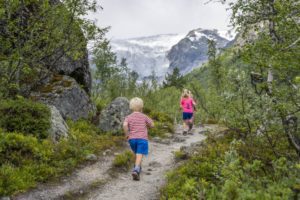
Bergsetbreen Glacier, Norway. Photo Vegard Aasen
Though not legally binding, this resolution paves the way for an acceleration toward the goal of an inclusive, green recovery. How? For instance, by incorporating the right to a healthy environment into national constitutions. People could then use national human rights law against environmentally destructive policies.
EUROPARC welcomes this normative development and reaffirms its commitment to human rights. As the representative voice of Protected Areas in Europe, we have long advocated for a healthy nature, to support a healthy society.
What is EUROPARC doing?
On the advocacy side, EUROPARC became the chair of the Environment, Climate Change, Heritage and Health Committee (ECCH&H) at the Conference of INGOs at the Council of Europe last year. The objective of this Committee is that:
human rights of European citizens are upheld with respect to the impacts of climate change, biodiversity loss and the connection between people and natural and cultural heritage.
The UN resolution further legitimises this important work.
EUROPARC invests energy and resources on several initiatives for Protected Areas, focusing on topics such as climate change adaptation, youth or health & nature, just to name a few.
Michael Hošek EUROPARC Federation President stated:
This welcome declaration will be an impetus to ensure people have access to a clean and safe environment, not only close to where they live, but in the nature that surrounds them. Protected Areas already give millions of Europeans access to a “clean, healthy and sustainable environment” and we need to ensure our parks are valued and invested in, to secure these nature and health benefits.
What can your Protected Area do?
Healthy Parks make Healthy People and are well suited to lead us into a green future – EUROPARC is there to support in this pathway.
The right access to a “clean, healthy and sustainable environment” is important to us all, so:
- If you want to know more
- If you want to contribute
Then, have a look at our resources on Climate Change Adaptation, join the different EUROPARC initiatives, like Healthy Parks Healthy People Europe or the programmes for Young People in Protected Areas.
Share your knowledge through any of our initiatives!
Together, we can create the green and healthy future of tomorrow.
EUROPARC General Assembly 2022
Important information for the General Assembly was sent out on 09.08.2022 to our members.
General Assembly 2022 – you are invited!
The EUROPARC Conference 2022 in France is fast approaching. After two years of digital General Assemblies, we will now finally meet face to face again in Argelès Sur Mer on the 5th of October.
To all our members: please check our inboxes! We’ve sent out the different documents and information for the General Assembly today, 09.08.2022. Please also check your spam, or connect to other colleagues of your organisation to see if they have received the email.
Should you not have received it, then please send an email with the name of your organisation to members@europarc.org.
We look forward to seeing you in big numbers in France!
Out now: EUROPARC Annual Report 2021
EUROPARC is continuously working for the benefit of Protected Areas in Europe. Discover all that we’ve done last year through the EUROPARC Annual Report 2021!
Life moves by fast! All the more reason so sit back and reflect every now and then. The EUROPARC Annual Report will help you to do just that.
In it, you can find all the webinars, publications, project outcomes and other outputs that we produced in 2021.
Obviously, the previous year was still heavily marked by the COVID-19 Pandemic, however EUROPARC is happy to say that we still were able to complete a huge amount of work. All of this helped create our vision of a
Sustainble Nature, Valued by People
From the online EUROPARC Conference, to the start of new projects like LIFE UrbanGreeningPlans and LIFE ENABLE, it is safe to say the Directorate did not sit still! You can also find out what the EUROPARC Sections have been working on, in the special part of the publication dedicated to their outputs.
Policy work, networking & new communication tools
We can look back on a successful, digital, Seminar Dialogue with the European Commission, where we discussed the targets and guidelines for the EU Biodiversity Strategy 2030. EUROPARC also published new policy documents on Sustainable Agriculture and of course we represented our members in Brussels throughout the year.
Of course, as always, we put special efforts into connecting our members, a task that become even more important in light of the pandemic. Through the online EUROPARC Conference, different thematic workshops and our webinars, we gave Nature Professionals the change to exchange on a wide range of topics. By making the most of different digital tools we continued to innovate and push the boundaries.
More than ever, good, effective communications underlined all of EUROPARC’s work. We launched the EUROPARC Podcast “Voices From the Parks”, and continued building our online following through Facebook, Twitter and LinkedIn.
All this, and much more, is waiting for you in this new edition of the Annual Report. So, sit back, relax and reflect on the year past.
The Annual Report is available in three languages:
Flip through the English Version
Flip through the German Version
Flip through the French Version
You can also download the PDF versions from the EUROPARC library here.

EUROPARC’s Annual Report has received funding from the LIFE Programme of the European Union. All opinions expressed in the publication belong only to the authors.
